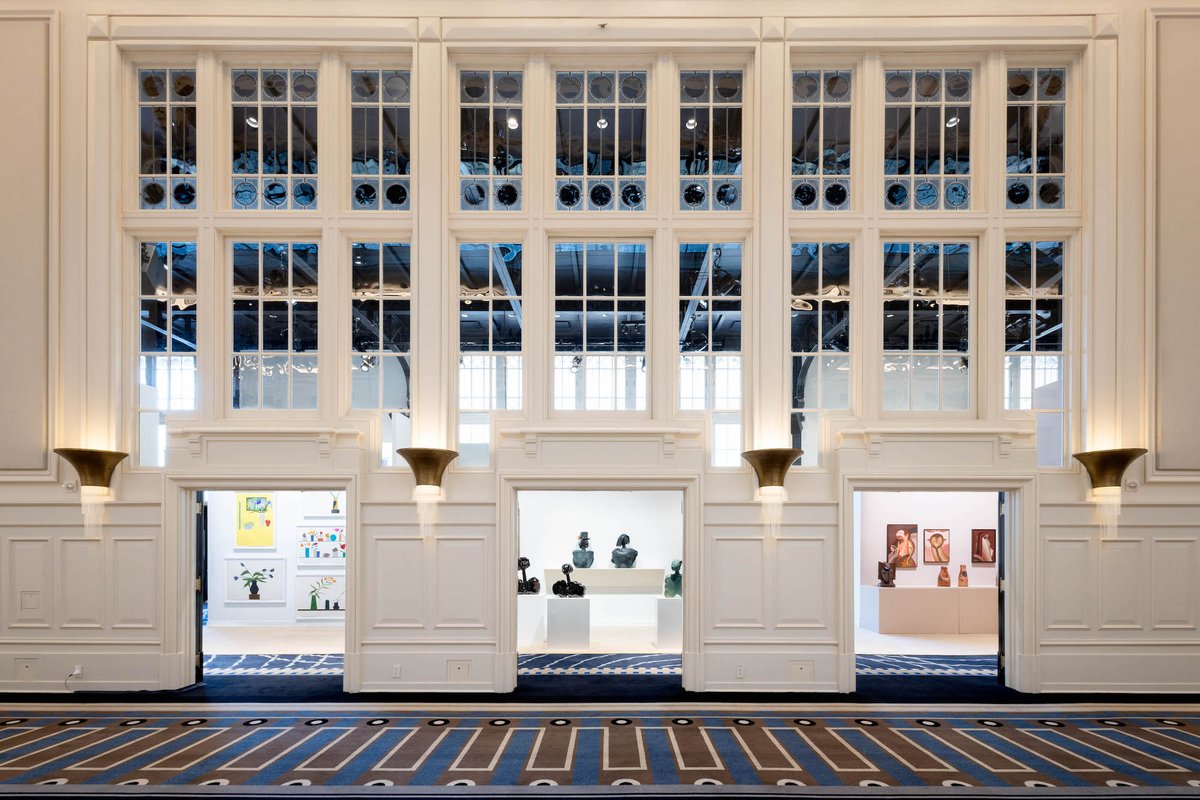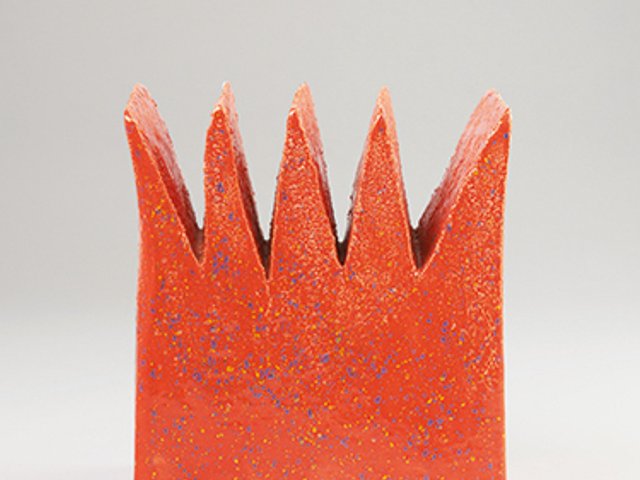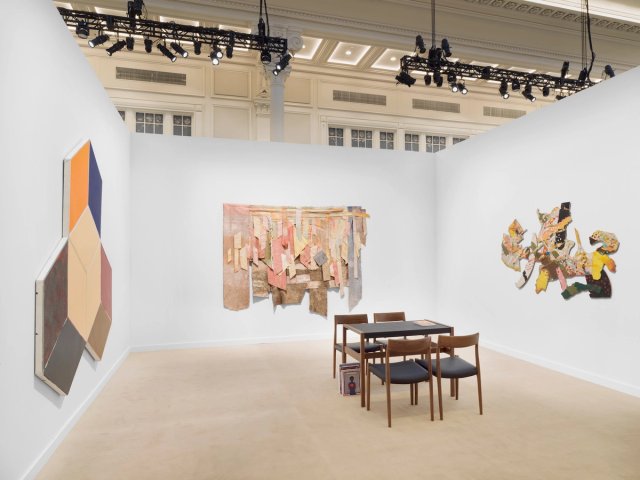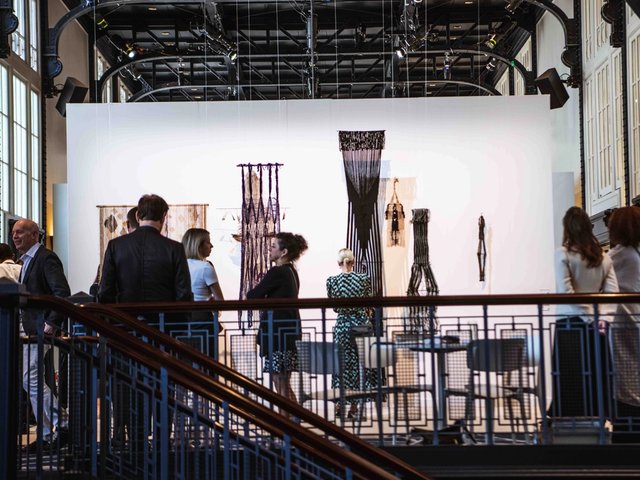In its sophomore outing, the Independent 20th Century art fair is back at Manhattan’s Battery Maritime Building. The location is fitting, not only because the building dates to 1909, near the beginning of the time period the fair covers, but also since its ornate Beaux-Arts architecture (and Art Deco rugs) make the perfect atmosphere for viewing 20th-century art—particularly that which has previously been overlooked, as is the fair’s focus.
The fair is manageable in size, with works by 50 artists shown on 34 stands, and though the art on view mostly comprises painting, it is in so many varying styles—figurative, Minimalist, abstract, Italian avant-garde—that there is truly something for everyone. With a special focus on women artists, Indigenous artists, those from the Caribbean and South Asia, self-taught artists and lesser-known works by the likes of Pablo Picasso, Alexander Calder and Andy Warhol, a motif that seems to weave through the whole endeavour is the importance of humour and the unexpected, even in the context of serious subject matter.
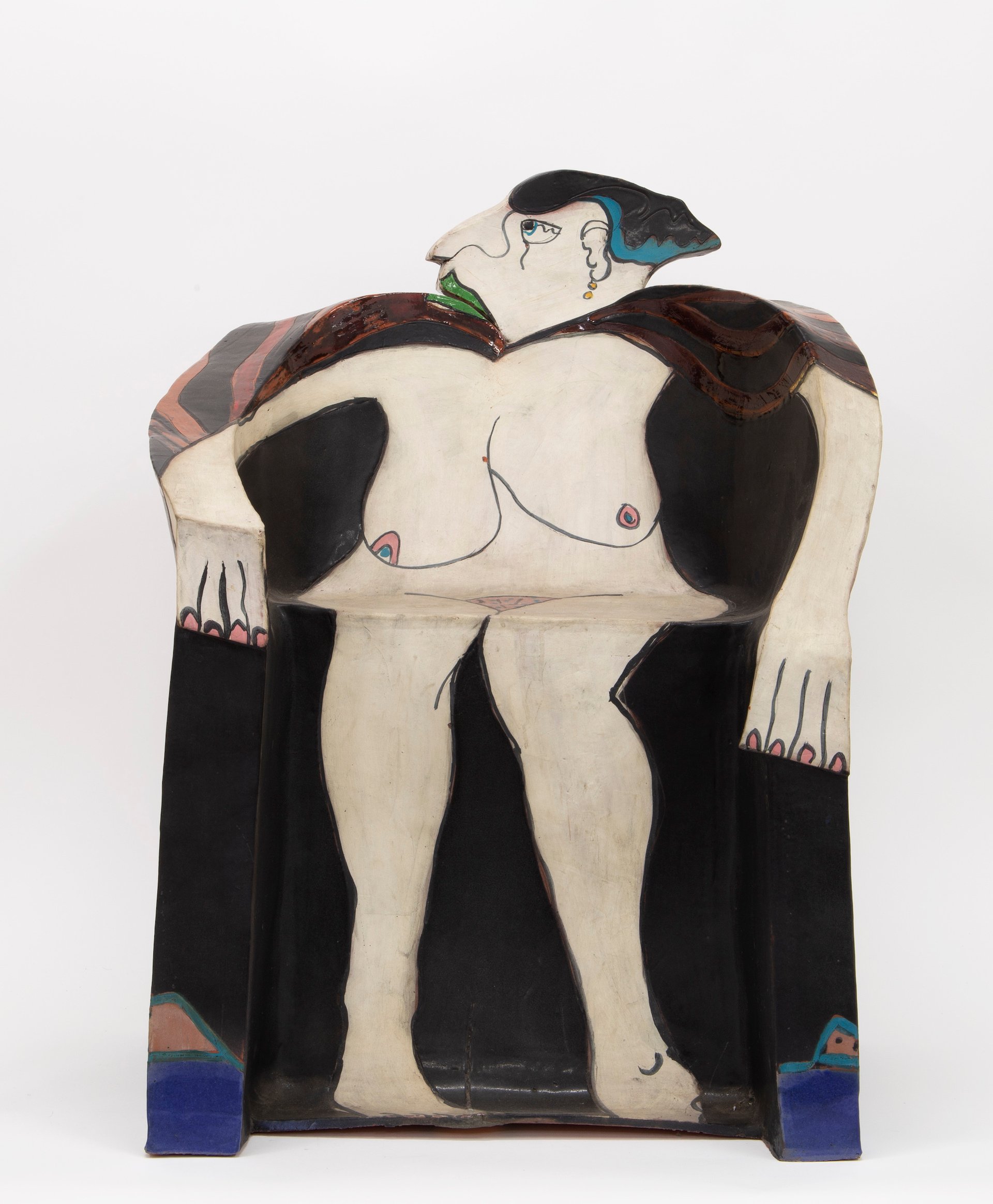
Camille Billops, Madam Puisay, 1981 © Camille Billops, courtesy the estate of the artist and Ryan Lee Gallery, New York
New York gallery Ryan Lee’s stand is the epitome of this juxtaposition of the solemn and the droll. Its three-artist presentation, titled we were there: activist art 1968 to 1981, includes works by Camille Billops (1933-2019), Vivian Browne (1929-1993) and May Stevens (1924-2019). The feminist artists were all friends, and each pokes fun at the patriarchy in her own way. Browne’s Little Men oil paintings show powerful white men as toddlers having tantrums, while Stevens painted repetitions of a self-serious man with glasses and a bulldog in his lap. But the highlight here is Browne’s set of four etchings in different colours, I am Black, I am Black, I am Dangerously Black (1973), poking fun at the odalisque, as well as an enchanting glazed-earthenware chair sculpture with a nude rendered on it so that a sitter falls right into the figure's lap, Madam Puisay (1981)—on view recently in the Museum of Modern Art’s Just Above Midtown exhibition.
At the next stand over, New York’s Fridman Gallery presents paintings, quilts, drawings and prints from the 1960s to early 2000s by Dindga McCannon (born 1947), who was raised in Harlem and only got her first major solo show in 2021. She has a delightfully creative way with mixed media. For her 1999 quilt Wedding Party #1 (priced at $125,000), McCannnon used pieces of lace, beads and jewellery to adorn her quilted subjects—a woman in the back particularly stands out, wearing an irresistibly furry stole decorated with a real brooch.
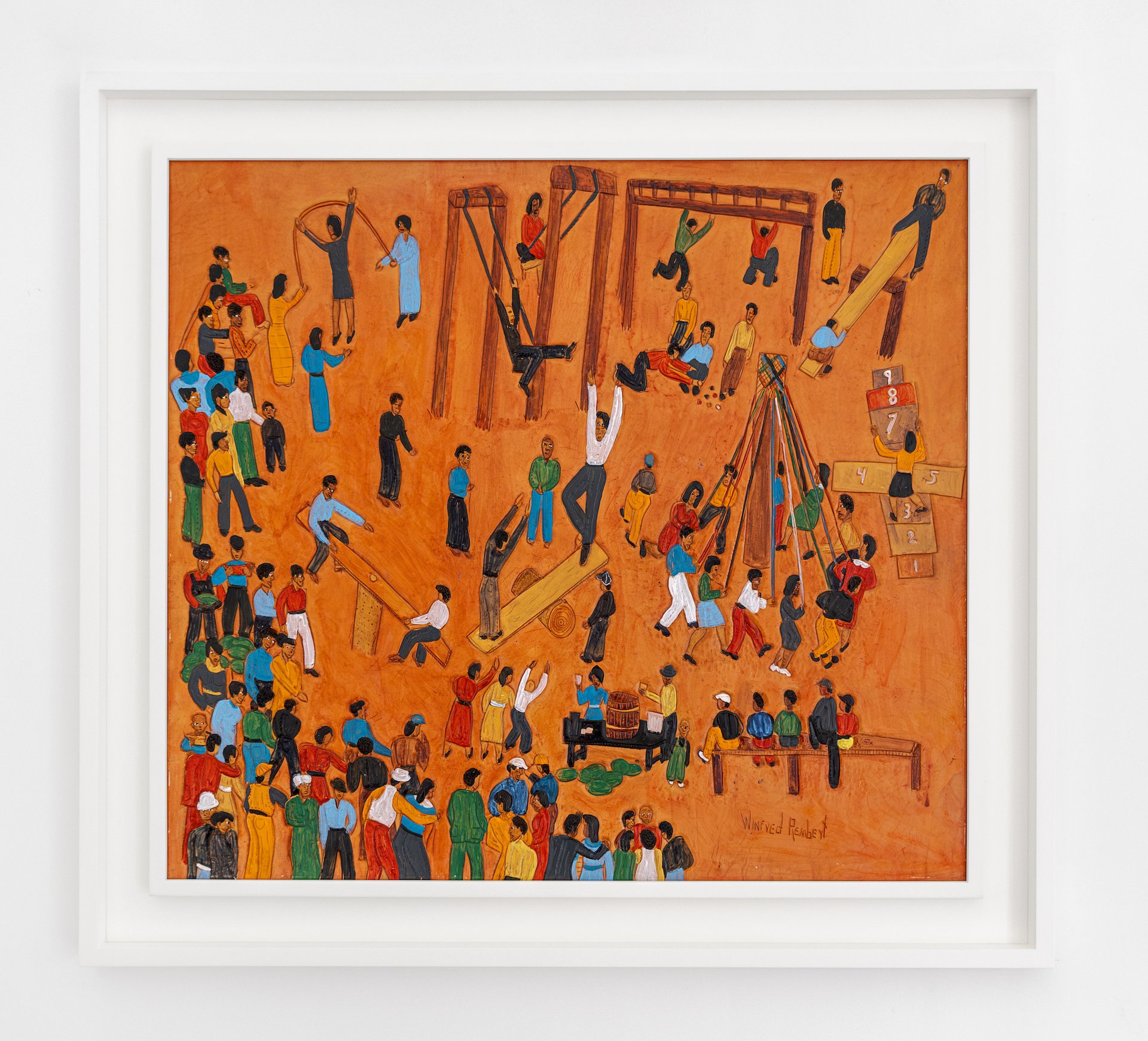
Winfred Rembert, Black Playground, 2003 © Estate of Winfred Rembert, courtesy James Barron Art
On the other side of the building, self-taught artist Winfred Rembert’s (1945-2021) paintings on leather at the stand of Connecticut-based James Barron Art provoke a similar reaction of wonder. Rembert, whose 2021 book Chasing Me to My Grave: An Artist's Memoir of the Jim Crow South won a Pulitzer Prize last year, learned to tool leather while he was unfairly incarcerated for several years in Georgia, where he learned to make wallets, purses and belts.
His leather paintings, priced between $250,000 and $500,000, depict lively playgrounds, church scenes and jazz clubs with equally bright colours as his scenes of a crowded prison and workers picking cotton. The leatherwork is so fine that viewers can see the individual stitches carved into the clothing of Rembert’s subjects.
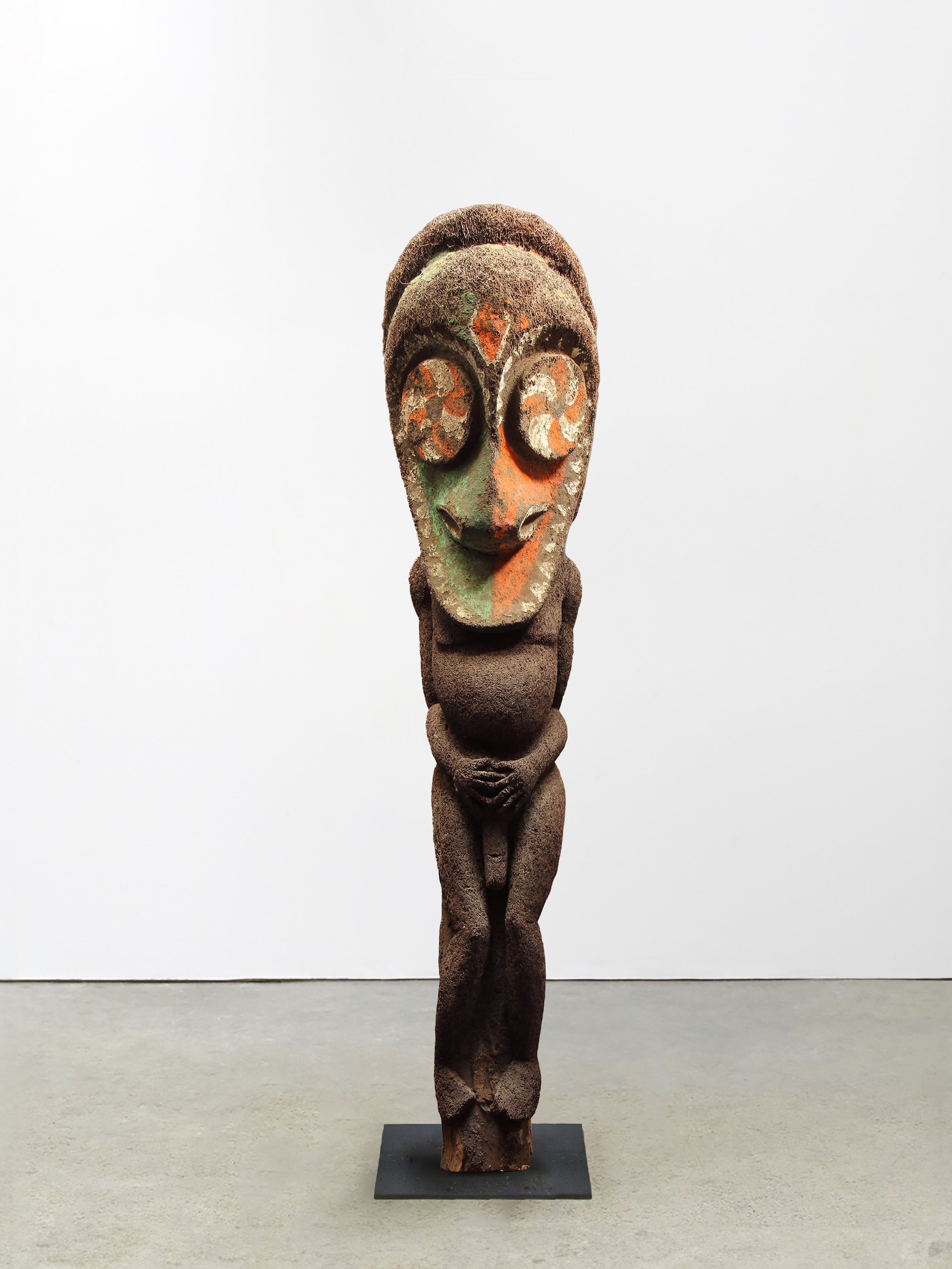
Grade Society Figure, Ambrym Island, Vanuatu, early 20th century Courtesy Venus Over Manhattan, New York. Private Collection
The centre of the fair, dedicated to lesser-known works by the likes of Picasso and Warhol, is flanked by two particularly interesting sculptural installations. One of these, at the stand of New York gallery Venus Over Manhattan, pairs Calder gouaches with giant wooden sculptures from the South Pacific archipelago of Vanuatu.
Made in the 20th century, the Vanuatu works are truly impressive, with the figures' saucer eyes staring straight over visitors’ heads, but the logic behind their pairing with the Calder pieces—the influence of “African and Oceanic art” on the American artist and the fact that he liked to collect artefacts from the region—seems rather thin. A gallery staffer at the stand went out of her way to chronicle the sculptures' provenance, but it appears that, even though they were carved relatively recently, not much effort has gone into seeking out their creators. And it is unclear what, if anything, the archaeologist who removed the works from Vanuatu in the 1950s gave local residents in return.
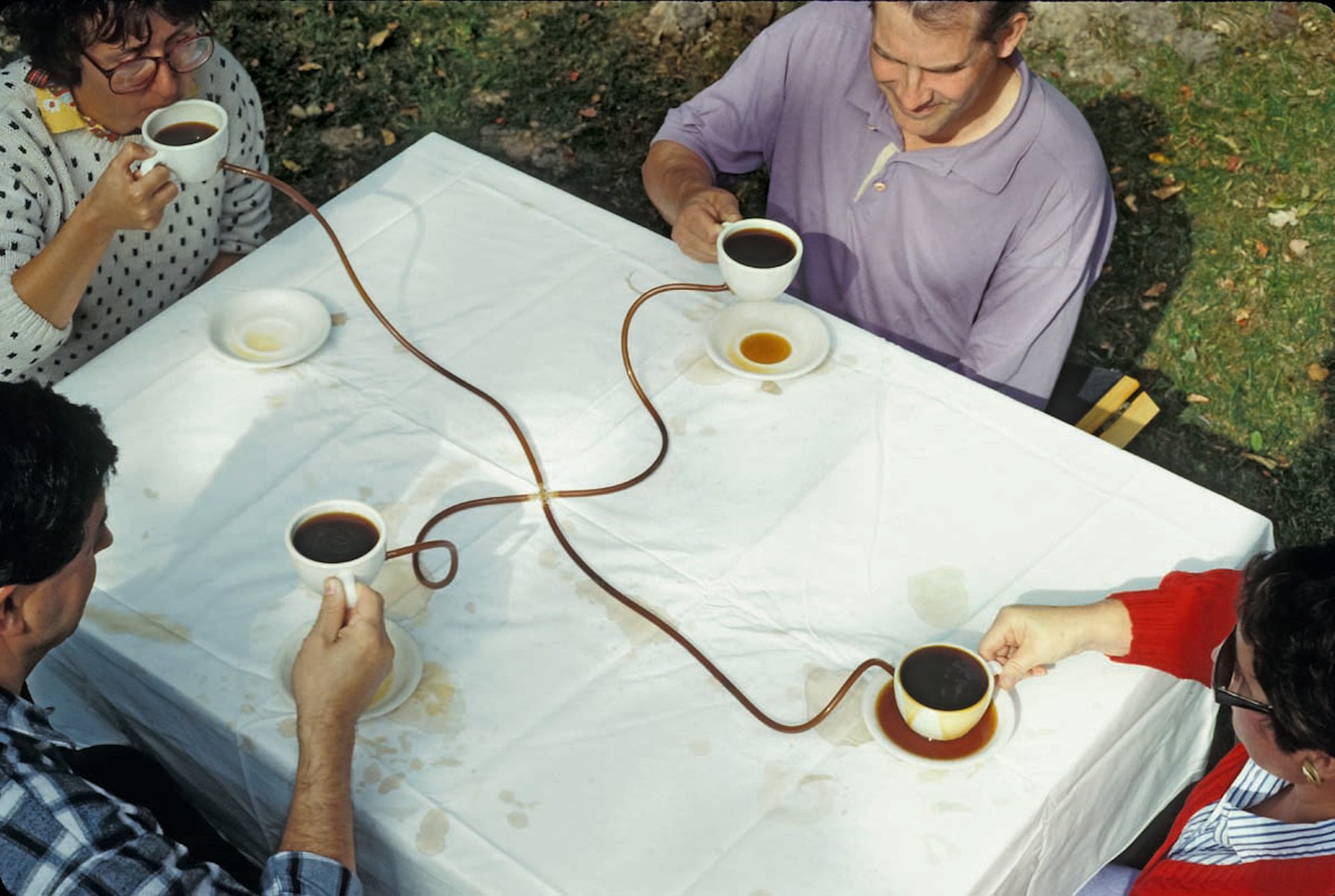
Allan Wexler, Coffee Seeks Its Own Level, 1990 Courtesy the artist
On the other side of Picasso and Warhol, meanwhile, the artist who made the sculptures on view was milling around during Thursday's preview, getting ready to activate one of them at the stand of New York’s Jane Lombard Gallery. Allan Wexler is a trained architect who makes works that interrogate human relationships and the built environment—and a number of them appear to incorporate coffee.
In the centre of the stand sits a square table with four chairs around it and four cups of coffee, which are all connected by tubes. After explaining Coffee Seeks Its Own Level (1990) to the four young people in black tasked with performing it, Wexler stood back and watched as each person lifted their cup and then put it down, so that the coffee flowed back and forth between the cups through the tubes, filling and emptying each cup as the performance progressed (this particular coffee was not for drinking). As the cups took turns rising and falling, the four sitters were forced to work together to try to keep them from overflowing—which they inevitably did, and the spilled coffee on the table is now a part of the finished work.
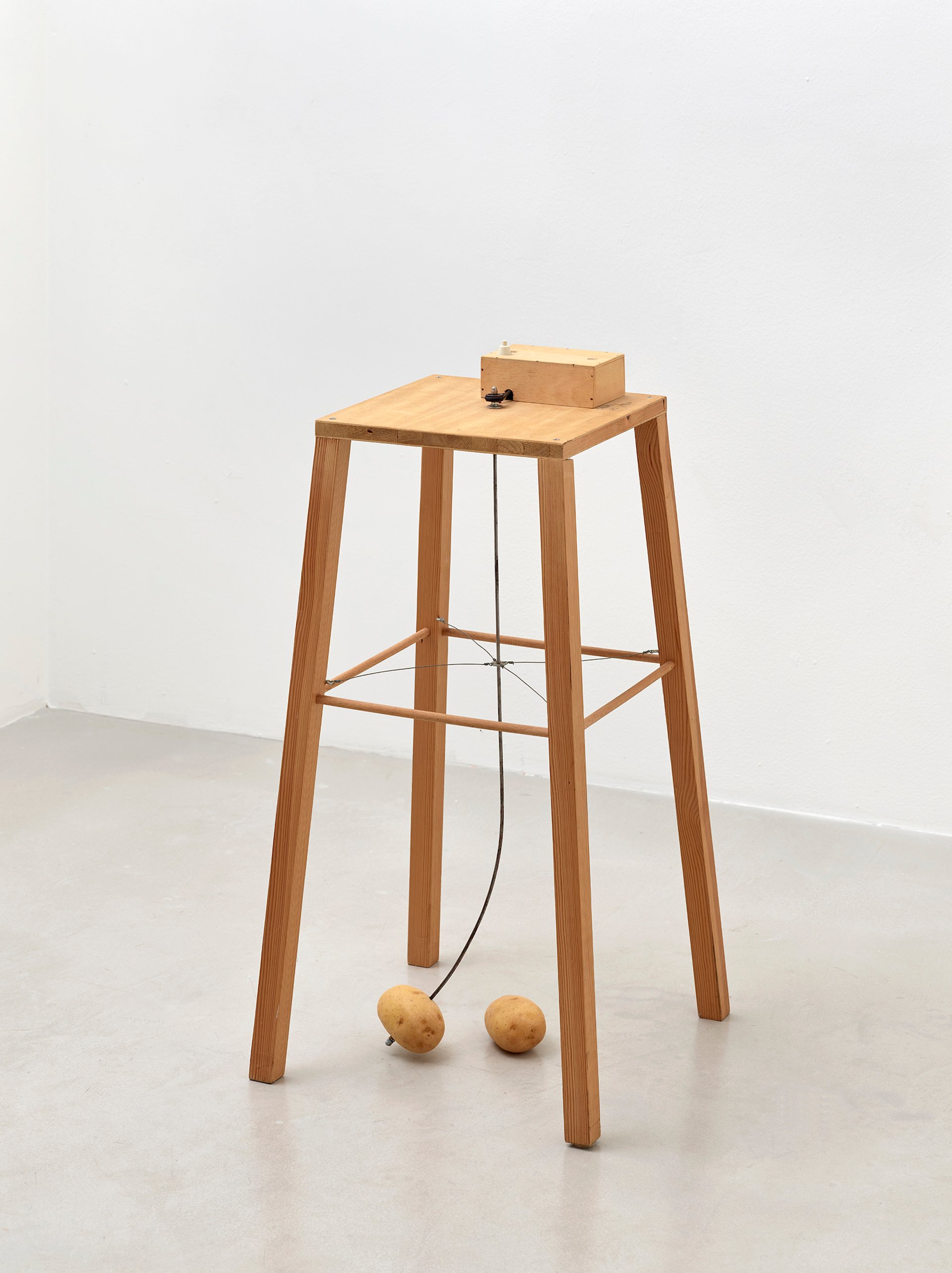
Sigmar Polke, Potato Machine – Apparatus Whereby One Potato Can Orbit Another, 1969 Courtesy the Estate of Sigmar Polke; VG Bild-Kunst, Bonn; Sies + Höke, Düsseldorf
At the opposite end of the fair, another unusual sculpture makes use of food without anyone consuming it. Sigmar Polke’s (1941-2010) Potato Machine – Apparatus Whereby One Potato Can Orbit Another (1969) is a stool with two potatoes attached to the bottom that, in stereotypically German fashion, do exactly as the title describes. The list of materials for the piece notes the inclusion of “2 (exchangeable) potatoes”.
This comical take on planetary movement is unexpected from Polke, a giant of post-war German art known primarily for his paintings, and it accompanies some of his photographic works at the stand of Düsseldorf gallery Sies + Höke. In one of his photos, Untitled (Atelierschrank) (1970-1988/1990), atop the titular studio cabinet and attached to a haphazardly balanced ruler, hangs a heavily redacted document—yet another example of unexpected humour in a seemingly serious setting.
- Independent 20th Century, until 10 September, Cipriani South Street, New York


